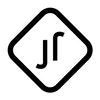Case Study: Grades and Personal Development Plans for Production company

HR

HR
Case Study: Collaboration with the Production company in creating professional grades and Personal Devepment Plans for Software Development Department
Problem
The organization faced challenges related to the lack of a structured approach to employee growth and skill development in the Software Development Department. This led to:Difficulty aligning the employee’s potential with organizational goals:
- Difficulty with managing salary and promotion budgets;
- Missed opportunities to utilize and enhance key technical and leadership competencies;
- Risk of reduced motivation and engagement due to the absence of a clear career path.
Expected Outcome
The implementation of Grades and Personal Development Plans (PDP) is aimed at addressing these challenges by:
- Creating clear and transparent career paths for every role in the Department (from Junior to Team Lead);
- Aligning the employee’s career growth with the strategic objectives of the organization;
- Clearly defining short- and long-term professional goals to foster motivation and commitment;
- Enhancing technical and leadership skills to improve overall team performance.
Proposed Solution
To solve the problem, a detailed Grades and PDPs was developed, which includes:
- A competency matrix outlining the required skills at different career levels (Junior, Middle, Senior, Tech Lead);
- A roadmap for achieving technical and leadership milestones over the next 6–12 months;
- A structured approach to learning based on the 70:20:10 model, combining practical assignments, feedback from mentors, and formal training;
- Regular progress reviews to ensure alignment with organizational needs.
Implementation
- Conducted an initial assessment of the employee’s current skills and competencies;
- Collaborated with the manager to define measurable short-term (6 months) and long-term (12 months) goals;
- Integrated specific actions into the PDP, such as hands-on projects, feedback sessions, 1-1 meetings, and participation in professional courses and conferences.
Results
- Increased employee engagement through a clear vision of career prospects.
- Improved efficiency and technical expertise in key areas.
- Strengthened alignment between the employee’s professional growth and the organization’s strategic goals:
- Enhancing the manageability of the salary budget, implementing salary and raise planning.
Conclusion
The development and implementation of the PDP resolved key challenges by providing clarity, structure, and motivation for the employee. It also created a scalable model for addressing similar needs across other roles in the organization.